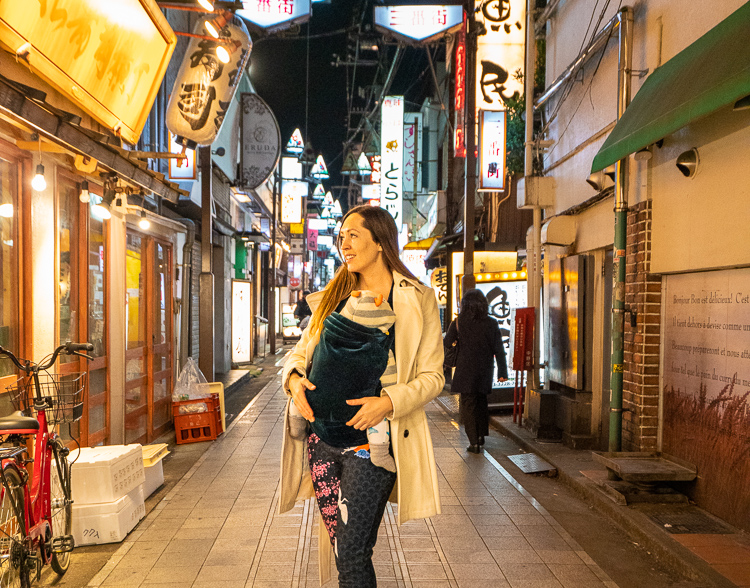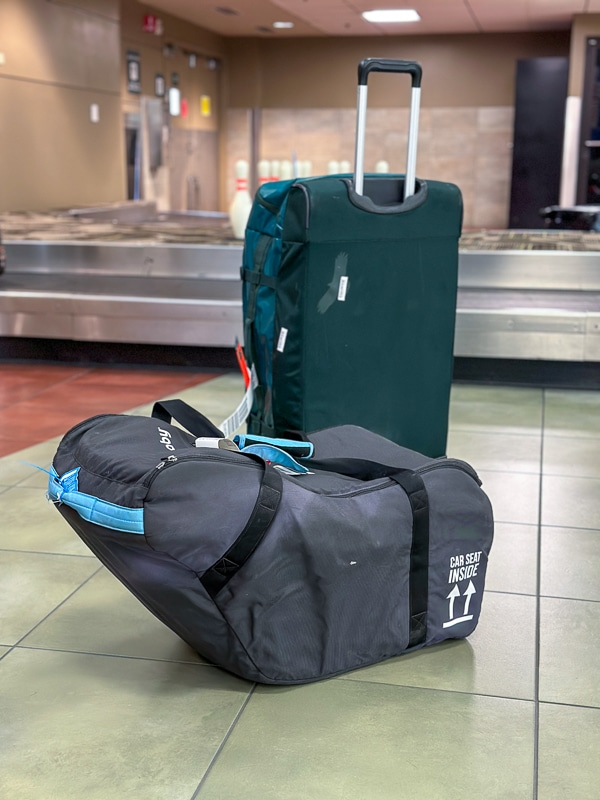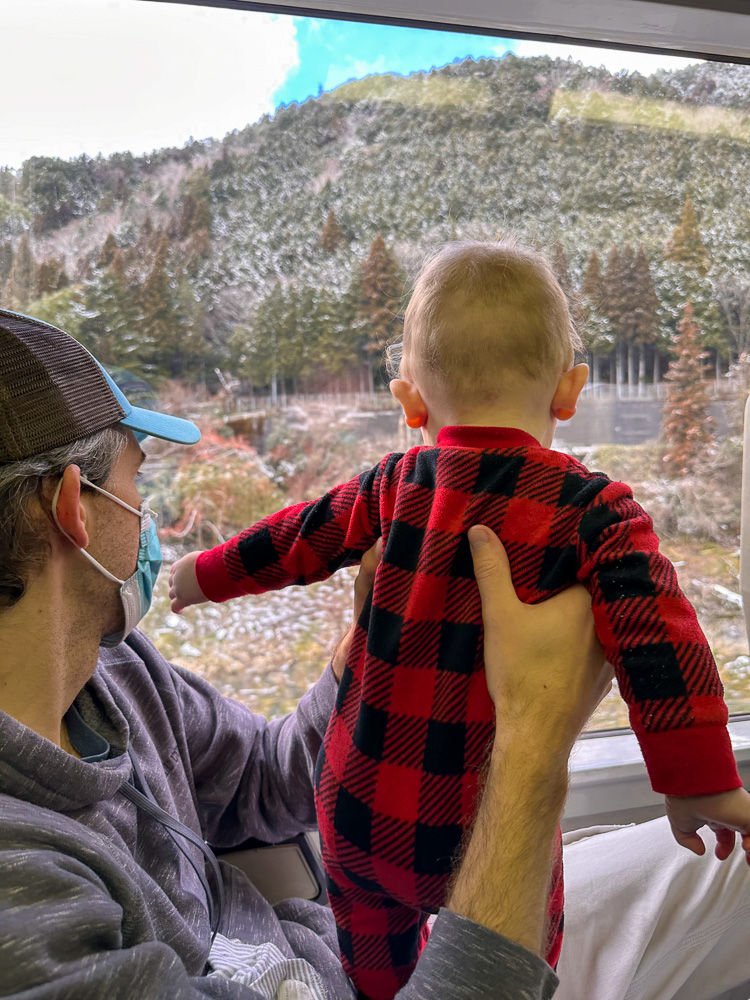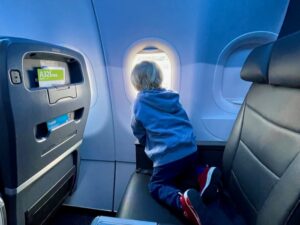Navigating Public Transportation with a Baby: Strollers, Carriers, and More
When it comes to exploring the bustling cities of Europe and the seamless transit systems of Japan with a baby in tow, let me tell you—it’s an adventure! I’ve been through it, and I’ve got some tips and tricks to share.
Packing light, booking seats ahead of time, staying connected, and navigating the quirks of public transport can make all the difference. So, grab a coffee (or tea, if that’s your thing) and let’s dive in!
Pack Light and Smart

First thing’s first, packing light is essential. I learned this the hard way on a trip to Japan pre-baby when I had to carry a heavy suitcase up and down stairs in the Tokyo Metro. Imagine juggling a stroller, diaper bag, and a baby in this scenario! Not fun!
For our family trip to Japan, I remembered the importance of packing for possible stairs, and knew we’d be not only carrying our own baggage, but wheeling it down sidewalks to get to the train stations and onto buses as well.
Public transportation trips are unfortunately not the ones to bring your fashion A-game to, because you’ll have to devote most of the packing space to your little one‘s needs. We try to book accommodation that has cribs already, leave the car seat at home, and use small, lightweight strollers that collapse and unfold easily in these scenarios.
A baby carrier is also a lifesaver for those times when strollers just aren’t practical. Think cobblestone streets and crowded trains.
The Best Bag for Public Transport Trips

One thing I discovered on my trips is that not all train and metro stations have elevators. In Tokyo, for example, many stations are equipped with elevators, but you’ll still encounter some without. You’ll often encounter the same in Europe, where many of the train stations do not have elevators.
This is where a duffel bag with straps becomes your best friend. You can wear it like a backpack if necessary, keeping your hands free for baby and stroller management and allowing you to navigate stairs with more ease. It’s too large to wear exclusively as a backpack, but it will get you through the stairs when necessary.
Booking Seats Ahead

When we traveled in Japan, it was the low season as it was winter time, and just showing up and getting seats on trains was almost always no problem. I did almost learn the hard way when we snagged the last seats on an essential part of our route that buses might be a different story! Regardless of time of year, and particularly during cherry blossom season, booking those seats ahead of time is absolutely necessary!
The same is true for long-term travel on any trains in Europe, especially on popular routes like Paris to Amsterdam. Booking ahead saved me many times from the nightmare of standing room only. Trust me, you don’t want to be caught without a seat when you have a baby and all their gear. Plus, reserved seats often come with more room for strollers and bags.
You might also want to upgrade to a first class seat to have more space and privacy when traveling with a baby. It’s an extra expense that might be worth developing more budget to on those long journeys.
Stay Connected
Staying connected is crucial when navigating public transport. On my travels, I’ve used various eSIM services to ensure I always had internet access. This allowed me to look up schedules, check for any changes or cancellations, and navigate unfamiliar routes with ease. Apps like Google Maps and local transit apps became my best friends.
In Japan, Google Maps worked great for train schedules, while in Europe, I relied heavily on local city apps to get around cities like Berlin and London. Having real-time information at your fingertips can make the difference between a smooth journey and a stressful one.
Avoid Busy Times
If you can, try to avoid traveling during peak hours. In Tokyo, rush hour is no joke, and squeezing onto a packed train with a baby is a challenge. The same goes for major European cities like London and Paris.
I found that mid-morning or early afternoon travel times were much more manageable. Plus, avoiding the rush means a more pleasant and less stressful experience for both you and your baby.
Plan for Inconveniences
Lastly, always be prepared for the unexpected. On one trip to Rome, I encountered several metro stations without working elevators. This is where a bit of foresight can go a long way.
Knowing that not every station is baby-friendly, pack for any scenario each day that you travel. You may also wish to book private transfers just to and from the airport that has car seats offered (I often do this on Viator), just to make sure there are no super stressful delays.
After several public transportation trips with our baby, it certainly is easier to rent a car and do road trips abroad, provided you’re comfortable with driving in new and different environments, but public transportation does at least remove the stress of renting and driving a car (which can be tough on narrow Italian roads and on the other side of the street!) that is present in some destinations.
It’s just about packing light, being a bit more resourceful, and planning ahead as much as possible!
*Some links in this post are affiliate links that support us at no extra cost to you when you purchase through them. We only recommend products we love and use ourselves. Your trust always comes first!







